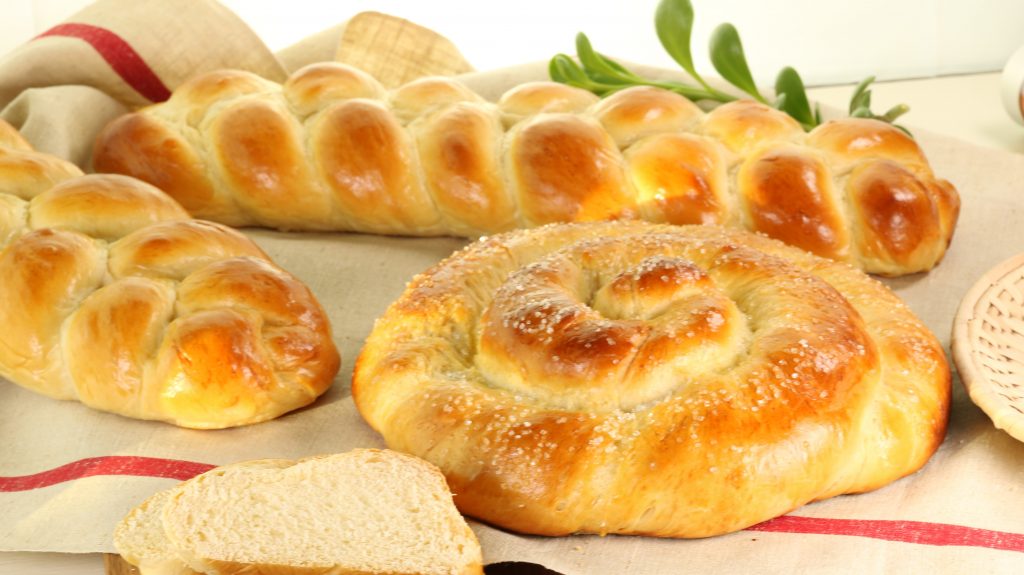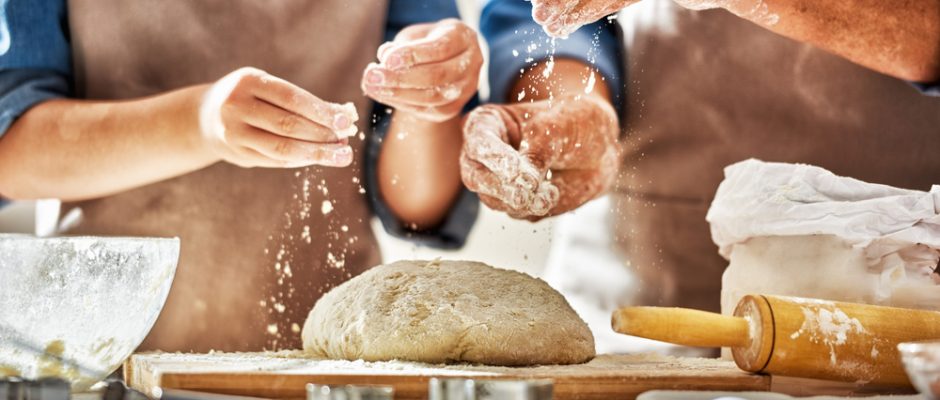It’s hard to imagine how many home bakers Cindy Falk, Domestic Marketing and Kansas Wheat Commission Test Kitchen Director and Co-Director of the National Festival of Breads has inspired and helped. Cindy has been testing and baking great home baking recipes with Kansas wheat for decades. As co-director of the National Festival of Breads she’s engaged her test kitchen in testing hundreds of innovative entries from across the U.S. Better yet, she gladly shares the winners!
We wanted to know: when Cindy bakes for her family, what’s her go-to bread?

“I bake Pão Dôce or Portuguese Sweet Bread, a traditional, rich bread that I have been baking and serving my family since I began employment with the Kansas Wheat Commission in 1988 with Sharon Davis. Together with the Wheat Foods Council and National Association of Wheat Growers, we promoted it as an ethnic “signature bread” on our bread bar at baking and restaurant shows. The recipe’s been featured internationally and across the U.S.”
“I love baking this dough because it is very versatile. You can make one dough but shape it into two completely different shapes. As pictured, shape one half into a long three-strand braid and the other half can include dried currants and be shaped into a round snail shape. Because it is a rich dough, it keeps well, staying moist for more than a day.”
The Pão Dôce or Portuguese Sweet Bread recipe can be found at the National Festival of Breads website.
Cindy’s Tips in preparing the recipe:
- I use bread flour in most of my yeast breads, including this recipe.
- Use a scale to divide the dough equally and a ruler to make sure all ropes of dough are the same length for a uniform look.
- For the 3-strand braid: Begin in the middle of the loaf and work toward each end. Shaping is really what makes your loaf yours.
- The egg wash I use is 1 whole egg beaten with 1 tablespoon water
- Just before baking, carefully apply the egg wash, over the entire surface so there are no streaks in the final appearance
- The recipe calls for dried currants. I like to soften them slightly in room temperature water and then drain and place on paper towel, so they don’t discolor the dough.
- Preheat your oven at least 10 minutes and check your oven with an oven thermometer to make sure your oven is doing what it should.
- Use a food thermometer to check the internal temperature of the bread to make sure it is done- at center, 200°F.
- It’s rich dough, so watch it carefully in the baking process. The egg wash tends to make the top crust brown quickly, so when it is a desired golden brown but not yet completely baked, tent the loaf with aluminum foil to prevent over-browning.
- Depending on your oven and baking sheet, I sometimes will double pan the bread during the first part of baking, removing the bottom pan during the last half of baking to prevent an overly browned bottom crust.
Don’t stop here! See more of Cindy’s great shaping baking resources at the National Festival of Breads website.




No comments yet.